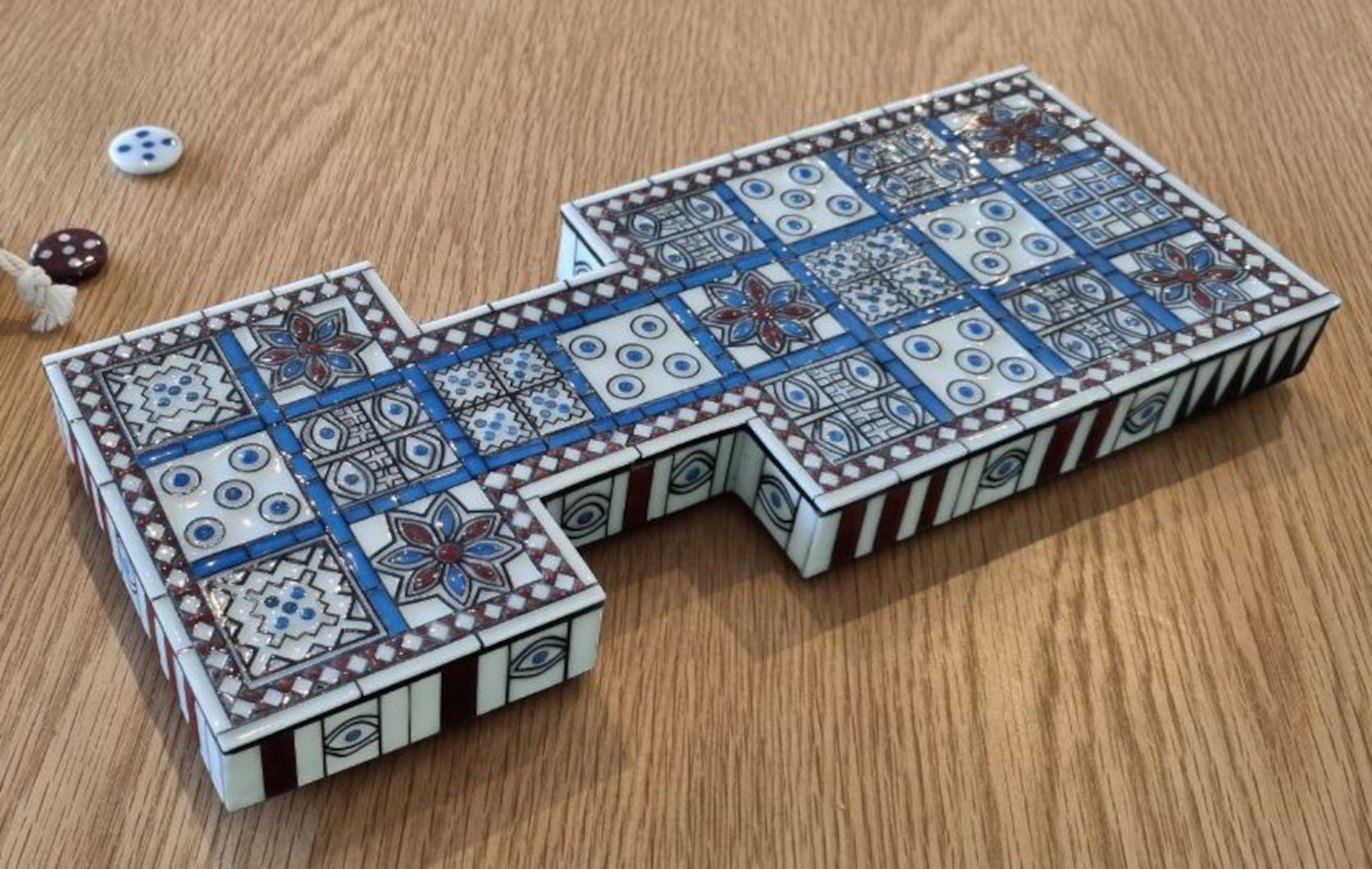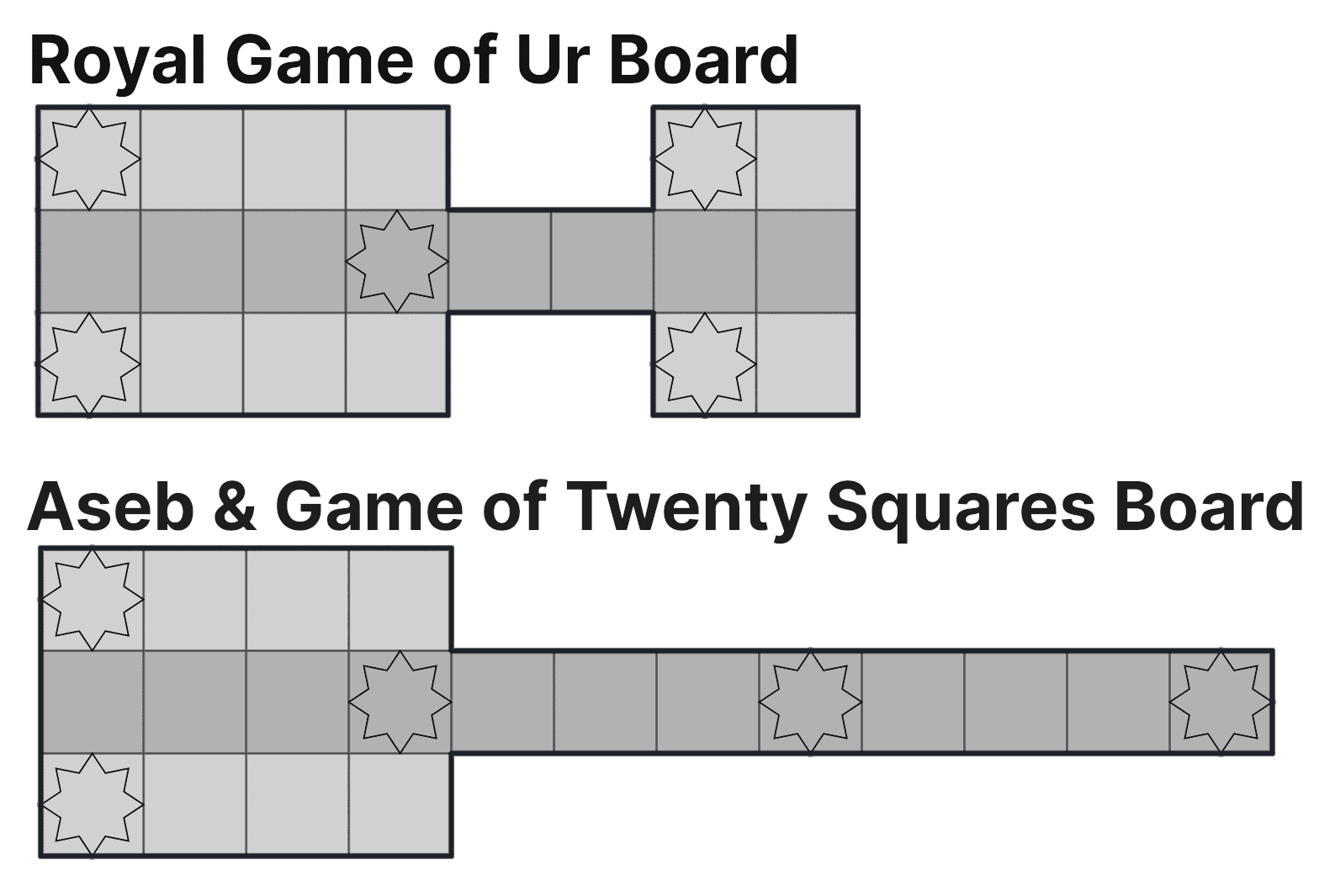Frequently Asked Questions
Some questions about the Royal Game of Ur come up a lot! That's why we've made this page of the most common questions people have. Hopefully your question is on here! Join us on Discord if you'd like any clarification or if you have questions we haven't answered here.

1. Are the bots on RoyalUr.net fair?
Short answer: Yes!
We often get people who are suspicious that our Panda bot has rigged dice rolls in its favour. I can with 100% certainty say that this is not the case! The Panda bot, and some of our other bots for that matter, are designed to put themselves in positions where there are more chances for them to get lucky. Therefore, they get lucky more often! However, we do recognise that despite this, losing to the bot over it getting a few perfect dice rolls is frustrating! Although, the same thing happens when playing human players as well.
We believe the biggest factor that comes in to accusing our bots of cheating is the the Law of Small Numbers. The Law of Small Numbers highlights that sometimes the bots do just get lucky! If you have only played a few games, then you have simply not seen enough dice rolls to prove the dice are rigged, and yet our brains will pick up on it as a pattern anyway! If you want to prove the dice are rigged, you would need to play tens or even hundreds of games, and record your dice rolls. This is not something that most people who think the dice are rigged will do! I believe there is also a psychological factor that comes into play, where we often attribute the success of the bot to luck, but our own success to skill. This causes people to think the game is rigged, as if the bot wins more, it must just be getting luckier!
2. Does skill matter in the Royal Game of Ur?
Short answer: Skill matters a lot, but luck can always turn the tide.
Our own experience has shown that the Royal Game of Ur is easy to learn, but hard to master! We have some players that find good challenge from the Medium bot, and others who routinely beat the hardest Panda bot! However, these observations are quite subjective. Can we be a bit more scientific? In fact, we can! There are several mathematical definitions for complexity that we can use to compare the “hardness” of the Royal Game of Ur (RGU) to other games. Two definitions that are often used for this purpose are the State-Space Complexity (SSC) and the Game-Tree Complexity (GTC).
State-Space Complexity measures the number of possible valid game states (i.e., how many positions are there?). Alternatively, Game-Tree Complexity measures the number of possible games that can be played, including all dice rolls and chosen moves. Diego Raposo and Padraig Lamont found that The Royal Game of Ur has a low State-Space Complexity, but a medium Game-Tree Complexity, which you can read more about in our paper. A graph comparing the complexity of the Royal Game of Ur (standard rules) and other popular games is shown below.

3. Is the Game of Twenty Squares the same game?
The Game of Twenty Squares is the term generally used for the game played on a board with a rectangle of twelve squares and a tail of eight squares, whereas The Royal Game of Ur is synonymous with the distinctively shaped board shown at the top of this page. The two games are not the same because not only are the boards different shapes, but the pieces and dice were also not identical. However, it was assumed by Finkel and other academics that the earlier Royal Game of Ur boards are probably the ancestor of the Game of Twenty Squares boards, and therefore that the two games had similar basic traits. The Game of Twenty Squares boards are also used for the game Aseb, and were much more common after 2000BC according to Irving Finkel compared to the Royal Game of Ur.

